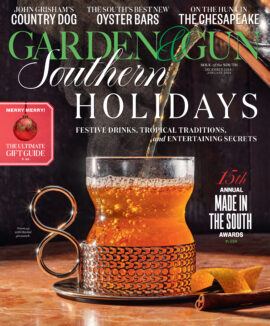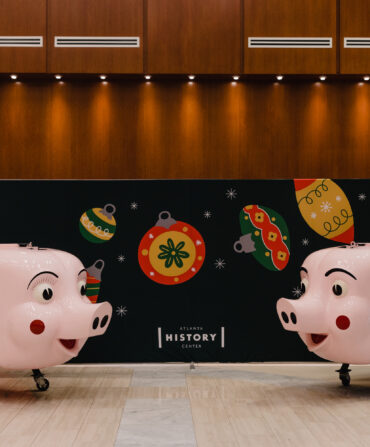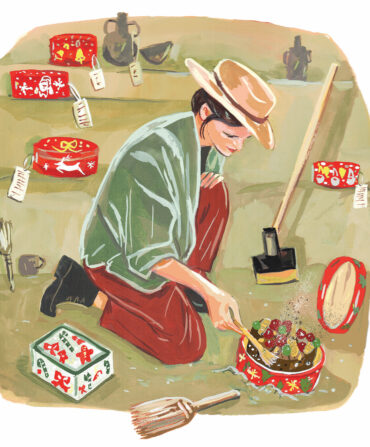One of the things I’ve always liked about the Mississippi Delta in general, and my hometown, Greenville, specifically, is that there’s always been a surprisingly cosmopolitan mix of cultures and nationalities. When Greenville was incorporated (again) just after the Civil War (during which it was destroyed by Sherman’s troops after the Siege of Vicksburg), the first elected mayor was Jewish, as were the owners of the first businesses to open and the founder of the first school. Since 1900, the majority of the citizenry have been African American, but there is also a sizable Syrian population, as well as large numbers of Chinese and Southern Italians. What we have never had in any significant amount are Mexican Americans.
Thus it likely came as no small surprise to the world at large last summer when our much-loved former mayor, the late Chuck Jordan, issued a proclamation declaring Greenville the Hot Tamale Capital of the World. The ceremony on the steps of City Hall was followed a few months later by the first annual Delta Hot Tamale Festival, which featured twenty-odd vendors whose wares I was lucky enough to sample in my official capacity as a judge. Most of the five thousand folks who turned up appeared to be fairly local, so they knew better than to expect a mariachi band or the comparatively bland and crumbly Mexican tamales that bear little resemblance to the moist, delicious, and highly seasoned Delta versions.
The latter are a predominantly African-American delicacy, but the ones I’ve been eating all my life, from Doe’s Eat Place, get even more complicated. Doe Signa Sr. was a first-generation Sicilian immigrant whose now landmark restaurant began life as a juke that also sold take-out spaghetti and tamales to his mostly African-American neighbors. When his son, Doe Jr., married his wife, “Sug” (short for “Sugar”), he warned him never to reveal the tamale recipe to her lest she leave him for someone else with whom she might share the formula. More than thirty years later, in 2007, the couple took the stage at Lincoln Center with the rest of the family after Doe’s was named an “American Classic” by the James Beard Foundation, and Sug described the atmosphere of the restaurant, which remains refreshingly unchanged: “People come together, never meet a stranger, it’s the American way.”
Much the same could be said of the creation of the Delta tamale itself, about which there is much speculation but little hard info, though the good folks at the Southern Foodways Alliance have made a valiant effort. The shortest and most likely version is that it dates back to the early twentieth century, when migrant workers were occasionally brought in from Mexico to pick cotton alongside the local African Americans, who would certainly have been familiar with the two main ingredients, cornmeal and pork. Another theory has the Italian population traveling down the river and doing their own recipe trading with migrant workers.
Versions of both could well be the case, a point articulated in one of the oral histories conducted by the SFA’s Amy Evans Streeter as part of the organization’s Hot Tamale Trail project. “Basically, the Delta was built up on a lot of people who were just travelers going from one destination to another,” Larry Lee, a former salesman at Greenville’s Hot Tamale Heaven, told Streeter. “That’s how the people melted here…. And from that, you get all kinds of cultures and ideas—you know, you share with me, I share with you. And before long, what can I tell you? Something came out of it and the tamale was one of those things.”
Whatever its origin, a Delta tamale is smaller than its Mexican counterpart and is usually made with plain white cornmeal as opposed to the finer masa. The filling is almost always well-spiced pork or beef, and the tamales themselves are simmered in liquid rather than steamed, a process that creates a tasty “juice” that bathes them in their shucks and keeps them moist. By 1928, their popularity among both blacks and whites was such that the Reverend Moses Mason recorded a song called “Molly Man” that included the lyrics “Good times is comin’/Don’t you see the sign?/White folks standin’ round here, spending many dimes” (on the tamales that were thirty cents a dozen). Eight years later Robert Johnson’s slightly more suggestive “They’re Red Hot” quotes the same price, which is a little less than what my father says he paid during his childhood in Caruthersville, Missouri, not far north of the Delta on the Mississippi: “You could buy them on the street, three for a dime, or you could roll the dice with the man, who always won. I grew up thinking they were a product of the Mississippi River rather than Mexico.”
My own relationship with tamales began at an even younger age—there’s a photo of my mother, eight and a half months pregnant with me, sitting on the wooden front steps of Doe’s. Since then I’ve eaten enough of them to make me fairly confident as a judge, but still, it’s a complicated business. My fellow judges (including my friend and Garden & Gun colleague Roy Blount, Jr., who was kind enough to make the trip) were given badges featuring dancing tamales and a lengthy orientation session during which we received guidance on how to score categories ranging from presentation to tenderness—a quality we were told “speaks for itself.”
There was an artisanal division and a commercial division, dessert tamales (including a weirdly delicious strawberry version made by the talented Antoinette Turner, of Drew, to whom I gave high marks), and a decidedly un-Delta tamale filled with butter beans and chicken from a bird its maker, “Papa Doc,” claimed to have recently killed himself. The top three winners in the artisanal category were makers of classic versions from Greenville, as was the Grand Champion, Mr. Gerald Jefferson, who was so overwhelmed by the crowds trying to buy his tamales that I never got to interview him about his technique.
There was plenty of other stuff to do, though. As at all good festivals, there was a parade and music (including Greenville’s own Steve Azar and the excellent Emerson Hart, of Tonic), a hot tamale tale-telling “front porch” anchored by my buddy Hank Burdine, and, of course, a Miss Hot Tamale, a stunning St. Joseph High School sophomore named Jade Mixon, whose ingenious (and startlingly attractive) dress was made entirely of corn shucks dusted with a hint of gold glitter. Naming the first queen was a no-brainer—she was Florence Signa, the late Doe Sr.’s beloved sister-in-law, who still works at the restaurant three or four nights a week and who greeted her subjects in a corn-shuck crown.
There was also a tamale-eating contest, won by a brave soul named Detric Boldien, who consumed twenty-five in five minutes. I was impressed with his achievement—he had to unwrap them, after all—but when I relayed his score to my friend W. Hodding Carter, whom I’ve convinced to accompany me to next year’s fest, he scoffed. Like me, Hodding grew up in Greenville, where he consumed a whole lot of hots. He’s also an intrepid sort who wrote one book about replicating the Lewis and Clark expedition and another about training to qualify for the Olympics in swimming at forty-two. More than twenty years ago, he wrote a piece for Outside magazine about coming in second at an oyster-eating contest at a seafood festival in Louisiana’s Lafourche Parish. That particular festival no longer exists, but I went to it once, the year after Hodding competed. It was held, for reasons I’ll never understand, in July. The heat—and the stench—was brutal. Hodding, who was then living in New York, had trained mostly in the air-conditioned oyster bars at Grand Central Station and the Plaza Hotel and was no match for an oil-field worker named Danny Vining, who ate 151 oysters in fifteen minutes. Still, Hodding came close—his score of 136 would have been higher but for the fact that the 136th oyster stayed on his fork for a full two minutes before he could force himself to swallow it. Plus, when time was called, Danny still had his last sixteen oysters in his mouth.
Hodding is already pumped up for next year’s contest and has asked me to warn Mr. Boldien that he’s not holding onto his title. A little competition will be exciting, and there’ll be more stuff, too, including a food writers’ symposium. We’ll have to come up with something to talk about other than how the tamale made its way to the Delta, because I’m pretty sure we’ll never know. I’m sticking with what Mr. Lee told Amy Streeter: “The best way I can sum it up is that you’re not from the Delta if you know nothing of tamales. It’s that simple. It’s the levee, it’s the blues, it’s the tamale.”








